Why Every Artist Needs a CRM (and How to Set It Up)
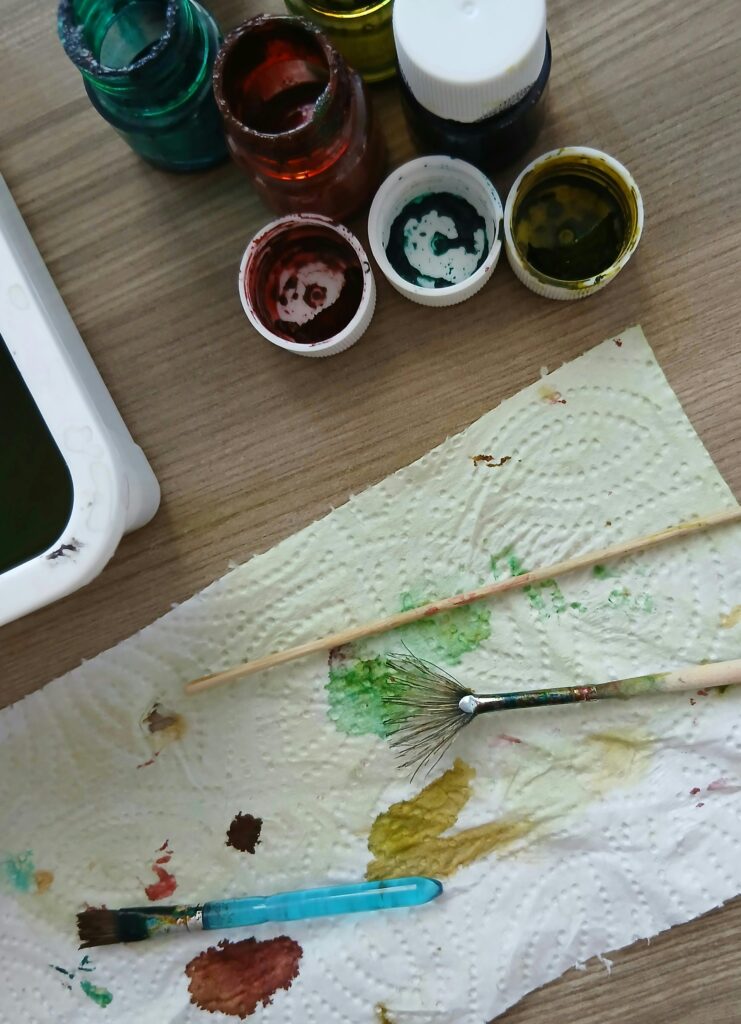
They say artists should focus on creating, not organizing, but let’s be real, creativity doesn’t thrive in chaos. Miss one email, forget one collector’s name, or lose track of who bought what, and suddenly opportunities start slipping through the cracks. That’s where a CRM comes in, not as some cold business tool, but as the quiet system that helps you actually see the big picture of your art career.
A CRM (Customer Relationship Management system) sounds intimidating at first, like something built for corporate sales teams, not painters or photographers. But think of it as your memory on autopilot. It keeps track of everyone who’s ever shown interest in your work, collectors, curators, gallerists, press contacts, even that person who said they’d “circle back” after the show. It organizes what your brain can’t hold, so you can spend more time creating and less time searching your inbox.
Most artists think they’ll “get organized later,” but later often comes after missed follow-ups, forgotten invoices, or that awkward moment when you can’t remember who bought a painting three years ago. A CRM prevents that mess before it starts. It turns your scattered contacts into a connected web of opportunities.
And here’s the magic part: once it’s set up, it doesn’t just track data, it reveals patterns. You start seeing who buys what, when they reach out, and what kind of work resonates most. It’s like your art career starts talking back, showing you where your energy pays off and where it’s being wasted.
Whether you’re selling directly from your studio, applying to residencies, or juggling gallery relationships, a CRM isn’t optional anymore, it’s your quiet power tool. Because the artists who stay on top of their relationships don’t just get lucky. They get remembered.
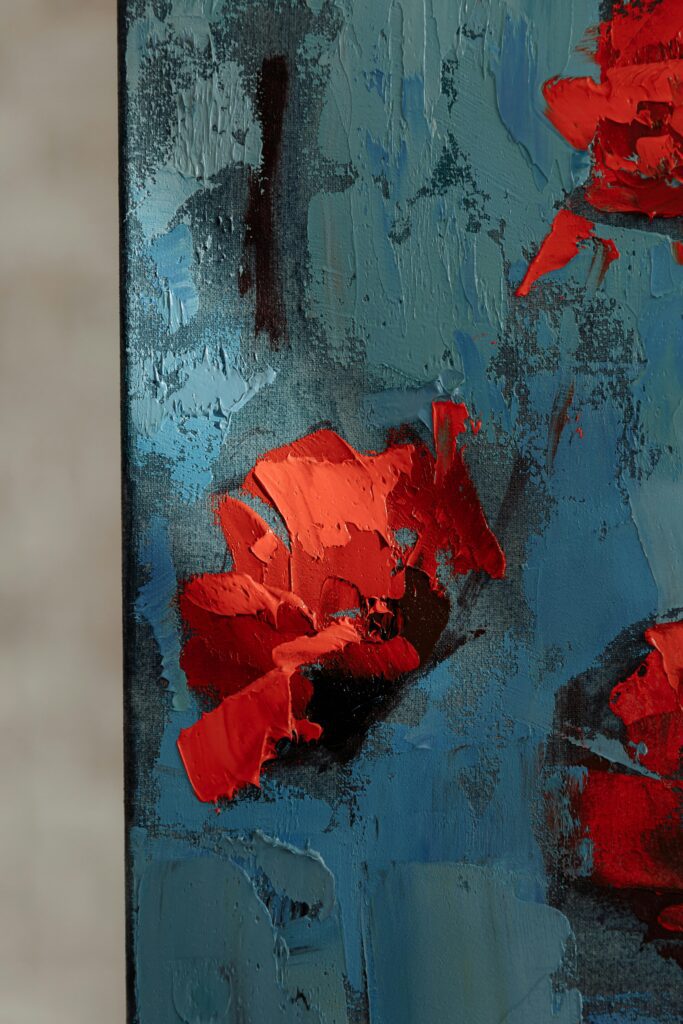
Your Art Career Is a Business (Whether You Like It or Not)
Every artist eventually hits that moment when the dream of “just making art” collides with reality. Emails pile up, messages go unanswered, and suddenly, you’re spending more time organizing than creating. It feels messy because it is messy. The truth is, the art world isn’t just about inspiration, it’s also about management. The artists who treat their work like a business aren’t selling out; they’re simply setting themselves up to last.
A CRM steps in right there, quietly cleaning up the mess. It’s not about spreadsheets or corporate jargon; it’s about clarity. It gives you one simple place to see everything that matters, who’s buying, who’s waiting, who’s fallen off the radar. Think of it as the studio assistant you wish you could afford.
When you have your contacts and notes all in one place, something shifts. You stop operating in panic mode and start feeling like you’re steering your own ship. Instead of reacting to things, you begin to plan, reach out, and follow through. That consistency is what separates the artists who thrive from the ones who just drift.
And the best part? You don’t have to change who you are to use it. A CRM adapts to you. Whether you’re a painter selling directly from Instagram or a sculptor working with galleries, it’s built to hold your version of “business.” That flexibility is what makes it such an artist-friendly tool.
Once you start seeing your art practice as both creative and strategic, your relationship with it changes. You realize it’s not unromantic to get organized, it’s actually one of the most powerful things you can do for your future self. The chaos fades, and clarity takes its place.
So no, a CRM isn’t just for people in suits. It’s for artists who want to stop chasing their tail and start building something that lasts.
What Exactly Is a CRM (And Why Should You Care)?
CRM stands for Customer Relationship Management, but don’t let the term fool you. In your world, “customers” might be collectors, galleries, curators, collaborators, or even grant coordinators. A CRM is simply a digital system that keeps track of all those relationships in one place. It’s part contact list, part memory bank, part magic.
Imagine you meet a collector at an art fair who loves your work but isn’t ready to buy. With a CRM, you can log their name, note what piece they liked, set a reminder to follow up later, and never lose that connection. Without it, that name gets buried under months of other emails and forgotten messages.
It’s not about being pushy or robotic, it’s about being intentional. The art world runs on relationships, not randomness. When someone feels remembered and valued, they stay connected. A CRM makes that effortless.
The beauty of it is that it grows with you. You can start small with 10 contacts and one show, and before you know it, you’ve built a map of your career, every sale, every opportunity, every “almost” that could still turn into something later. It’s your personal art-world history, organized and searchable.
The idea isn’t to turn art into data, but to use data to strengthen your art career. When you can see your connections clearly, you stop guessing and start strategizing. You can finally make decisions based on patterns instead of panic.
So when someone says “you need a CRM,” what they really mean is: you need a way to stop losing track of your own success.
The Hidden Cost of Disorganization
Every unread email, every lost lead, every forgotten collector, that’s opportunity leaking out of your practice. Most artists don’t realize how much potential slips away simply because they’re too scattered to keep track of it. And it’s not because they’re lazy; it’s because they’re juggling a hundred creative and admin tasks at once.
You know that feeling when someone emails about a piece you already sold, and you can’t remember who bought it? Or when you’re asked for a client list, and you have to dig through three inboxes and your DMs? That mental chaos adds up. It eats away at your focus and your confidence.
The truth is, disorganization doesn’t just waste time, it quietly limits your growth. Every missed follow-up is a missed sale, a missed connection, or a missed collaboration. And when you start tracking that over a year or two, it’s staggering.
A CRM doesn’t just fix that; it frees you. It gives you a home for everything, names, conversations, purchases, deadlines, even grant applications. Once everything has a place, your brain finally has space again. You stop carrying your career in your head and start trusting the system to remember for you.
Artists often resist structure because they fear it’ll box them in. But the opposite happens. When you have a system holding you up, you get more time and energy to create. The admin stress fades into the background.
So if your inbox feels like a battlefield and your notes are scattered across three notebooks, it’s time. Your creativity deserves a better container.
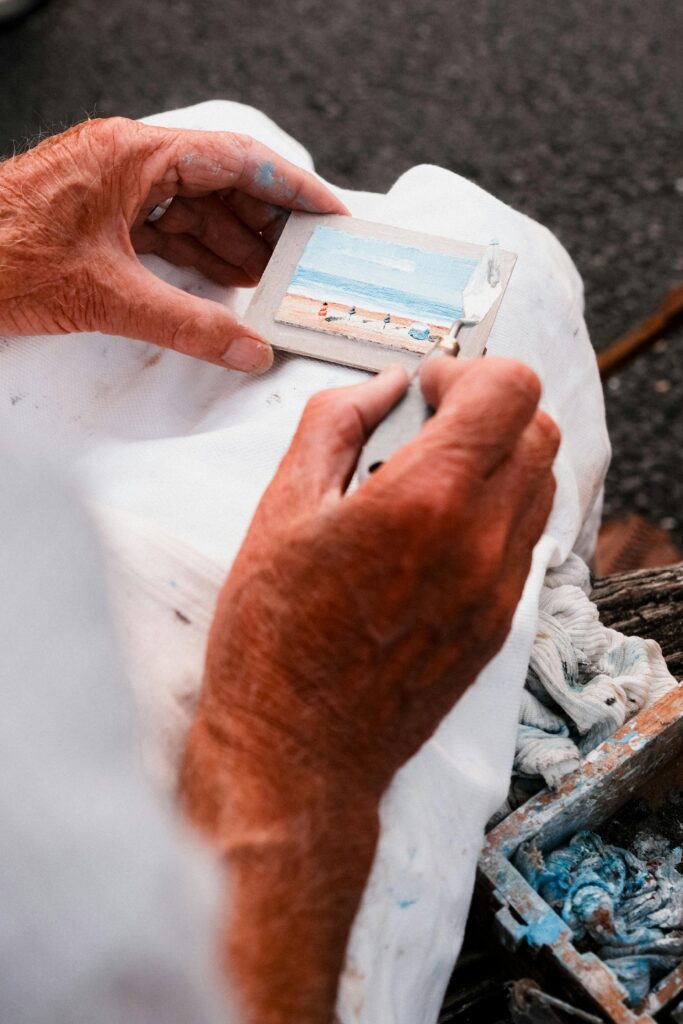
Picking the Right CRM for Your Art Practice
There’s no one-size-fits-all when it comes to CRMs. Some artists thrive with simple tools like Airtable or Notion, while others prefer dedicated systems like HubSpot, Zoho, or Pipedrive. What matters isn’t which brand you choose, it’s whether it fits your rhythm.
Start by asking: what do I actually need to track? For most artists, that means names, emails, artworks, purchases, show submissions, and communication notes. If you’re applying to open calls or grants, you might also want deadline tracking. The key is to pick a system that feels intuitive, not something you dread opening.
If you’re not tech-savvy, start light. A simple spreadsheet can become your first CRM, and you can upgrade later. The goal isn’t perfection, it’s consistency. What matters most is that you start using something to hold your data in one place.
Some artists also integrate tools they already use, Google Sheets, Trello, or even Notion databases, because familiarity reduces friction. A system you’ll actually use beats a fancy one you’ll ignore.
Once you’ve chosen your platform, take time to set it up properly. Add your contacts, label them clearly (collector, curator, collaborator), and log notes from previous interactions. The first setup feels tedious, but it pays off endlessly down the road.
A CRM only works if it feels like yours. Make it reflect how you work, not how a software company thinks you should.
Turning Your CRM Into Your Personal Art Memory
Every artist has those small but powerful moments that get lost over time, who loved a certain piece, what someone said at your opening, which gallery owner mentioned your name. A CRM helps you hold onto those threads, because sometimes one tiny detail can lead to your next big opportunity.
Think of it like keeping your professional memory alive. You might not remember what you discussed at that residency mixer two years ago, but your CRM will. It’s like having a second brain that only stores the career parts.
When you log these small interactions, you start to see patterns. Maybe one collector only buys in spring, or one gallery responds better when you send new work in progress. That’s not coincidence, that’s data quietly working in your favor.
And it’s not just about selling. A CRM also helps you track relationships that matter beyond money, mentors, curators, peers who could recommend you later. Your network becomes visible, not just a fog of names you can’t quite place.
The more details you capture, the more personalized your outreach becomes. You stop sending generic updates and start writing emails that actually feel like conversations. That small difference builds massive trust.
Art may be emotional, but opportunity often hides in the practical. When you treat your CRM like your personal history book, you start shaping the story of your career intentionally.
Automate the Boring Stuff (So You Can Focus on the Good Stuff)
Let’s be honest, artists don’t dream of writing reminder emails or sending follow-ups. Automation is your secret weapon for keeping relationships warm without losing your mind. Most CRMs let you set gentle reminders, auto-send updates, or even organize your email sequences for new collectors.
For example, when someone buys a piece, your CRM can automatically remind you to check in after a few months. Or when someone joins your mailing list, it can send a thank-you message without you lifting a finger. These small automations make you look polished and professional, even when you’re deep in studio chaos.
It’s not about being robotic, it’s about creating space for the human parts. The more you automate the repetitive stuff, the more time you free up to actually paint, sculpt, or design.
You can even automate follow-ups for applications, residencies, and grant opportunities. A quick nudge at the right time can make the difference between being forgotten and being remembered.
If you’re worried automation will make you sound impersonal, don’t be. You still write the words; you just let technology handle the timing. It’s like scheduling your future self to be thoughtful.
In a world where attention is fleeting, being consistent matters. Automation isn’t a cheat, it’s how you stay present without burning out.
Tracking Collectors Without Losing the Personal Touch
Let’s be real, most artists have their collector info scattered everywhere , a few emails in Gmail, some names scribbled in a sketchbook, maybe a spreadsheet you opened twice last year. It’s not that you don’t care, it’s that you’re busy making art. But when you finally need to follow up or send previews of new work, suddenly, it’s a treasure hunt. A CRM puts an end to that chaos by keeping every contact organized, searchable, and ready when you are.
The magic is in what happens after you store that data. You can tag collectors by what kind of work they like, note what they’ve purchased, or set reminders to reach out. Instead of awkwardly guessing what someone might be into, you already know what caught their eye. That’s how you shift from one-time buyers to long-term supporters , not by luck, but by thoughtful follow-up.
And no, this doesn’t make your process robotic. It’s the opposite. A CRM helps you remember birthdays, art fair meetups, or even personal notes like “loves abstract landscapes.” When you follow up with warmth and relevance, people feel seen. That little moment of “wow, they remembered me” can mean more than any marketing campaign.
Think of it like maintaining friendships. You wouldn’t text your best friend only when you need something, right? Collectors, curators, and collaborators are no different. They respond to genuine relationships, not transactional updates. A CRM helps you maintain that natural rhythm , so even your outreach feels like an extension of your personality, not a sales pitch.
Over time, this consistency compounds. The more you use your CRM, the more powerful it becomes. You’ll start seeing patterns , who buys what, how often, what kind of messaging gets replies. It’s not just data, it’s insight into how people connect with your art.
And when you see it that way, “tracking collectors” stops sounding cold and starts feeling like care. You’re not managing people, you’re managing connection.
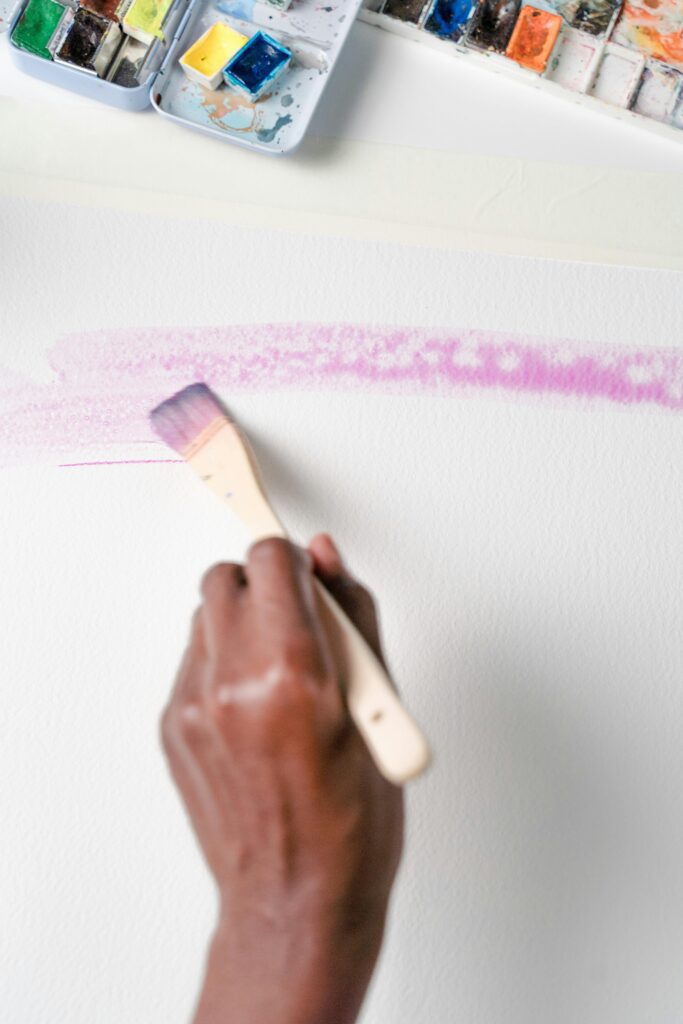
How to Build a CRM System That Actually Fits You
Let’s get this out of the way , not every artist needs a fancy, tech-heavy CRM. What you do need is a system that fits your workflow. For some, that might mean using Airtable or Notion. For others, a tool like HubSpot, Flowlu, or Artwork Archive makes more sense. The best CRM is the one you’ll actually use, not the one with the most features.
Start simple. Begin by listing the categories that matter most , name, contact info, what kind of art they collect, notes from past interactions, and follow-up dates. That’s it. Once you get comfortable, you can layer in automations or reminders. But if you overbuild it from day one, you’ll burn out before it helps you.
The goal is to make it feel like part of your creative rhythm. Maybe you update it every Friday before you close the studio or every time you send a newsletter. Make it routine, not random. Like stretching after painting , it’s easier to stay consistent when it’s part of your flow.
If you’re feeling tech-averse, look for tools that speak your language visually. Many CRMs now use Kanban boards or gallery views that make it easy to see relationships at a glance. Think less “spreadsheet” and more “visual map of your art world.” You’ll be surprised how much more you enjoy managing contacts when it looks and feels creative.
A small but powerful tip , link your CRM to your email or calendar. That way, you can set follow-ups automatically, track replies, and never forget who you promised to send your next show invite to. It keeps you professional without losing that artist spontaneity.
By building your CRM around you, you turn it into an ally, not a chore. The key is sustainability , a system you can grow with, not one that overwhelms you.
Nurturing Leads Without Feeling Salesy
Many artists freeze at the thought of “nurturing leads.” It sounds corporate and cold. But what if you reframed it as keeping your creative circle warm? A CRM helps you do exactly that , stay connected without constant hard selling. It’s about showing up, not shoving your work into inboxes.
The easiest way to start is by checking in with people at natural touchpoints. Maybe they commented on a post, visited your booth, or bought something last year. Send an update, a studio sneak peek, or a personal thank you. Small gestures of connection go a long way, especially when they’re rooted in authenticity.
Think of your CRM as a memory bank for your relationships. It helps you remember where you left off so every message feels natural, not forced. Instead of sending generic mass updates, you can personalize them , “You mentioned loving that blue palette; my new piece might be your favorite.” That kind of connection stands out.
And don’t underestimate the power of timing. A CRM lets you schedule gentle reminders to reconnect. That way, you don’t have to rely on memory or mood to stay visible. When you’re consistent, you become part of their radar , not as a seller, but as an artist they genuinely enjoy hearing from.
The irony is that good systems make you sound more human. Because you’re not rushing or forgetting, your interactions have more care. And in the art world, where relationships fuel everything from sales to shows, that care is your biggest competitive edge.
You’re not chasing leads. You’re building relationships that last longer than a single sale.
How CRMs Help You Stay Ready for Big Opportunities
Every artist knows that opportunities often arrive out of nowhere , a curator DM, a gallery invitation, a brand collab email at midnight. When that happens, the last thing you want is to scramble for your contacts, portfolio links, or buyer list. A well-kept CRM keeps you ready.
Imagine being able to pull up a list of potential collectors who love your abstract work in seconds, or sending an organized pitch email to your top curators with one click. That’s the quiet power of preparation. It’s not luck when you’re ready , it’s structure paying off.
It’s also what helps you scale gracefully. As your career grows, so will your network. If you wait too long to build a CRM, you’ll find yourself trying to reconstruct years of forgotten connections. Doing it now means future-you can focus on creating, not catching up.
The best part? A CRM doesn’t just organize names. It captures context , when you met, what they responded to, what you promised to follow up on. That’s what makes your outreach feel personal, even as your network expands.
Big opportunities favor artists who can respond fast and professionally. When your systems are tight, your responses are confident. You can say yes to bigger things because you’re not buried under disorganization.
Think of it like stretching before a marathon. You’re not doing it for now , you’re doing it for when it counts.

Automate the Boring, Keep the Heart
Let’s clear one misconception , using a CRM doesn’t mean losing your human touch. The smartest artists use automation not to replace connection, but to protect it. You automate the repetitive stuff so your energy can go toward real interactions.
Set up simple automations: welcome emails when someone joins your list, gentle reminders for follow-ups, thank-you messages after a sale. These aren’t robotic; they’re care on autopilot. They make sure no one feels forgotten even when your studio life gets hectic.
But here’s where most artists go wrong , they try to automate everything. Resist that urge. Keep space for genuine moments. Reply personally when someone writes back, send voice notes instead of canned replies, or add a handwritten thank-you with each delivery. The CRM handles logistics; you handle heart.
The beauty of this balance is that it keeps your art career both scalable and soulful. You can grow your collector base without feeling like you’re losing intimacy. Every message, every reminder, still has your tone, your rhythm, your warmth.
Over time, this mix of automation and authenticity becomes your superpower. You show up consistently and meaningfully , a rare combo that sets you apart in a noisy digital world.
Because at the end of the day, people don’t fall in love with systems. They fall in love with sincerity , and a good CRM helps you show more of it.
